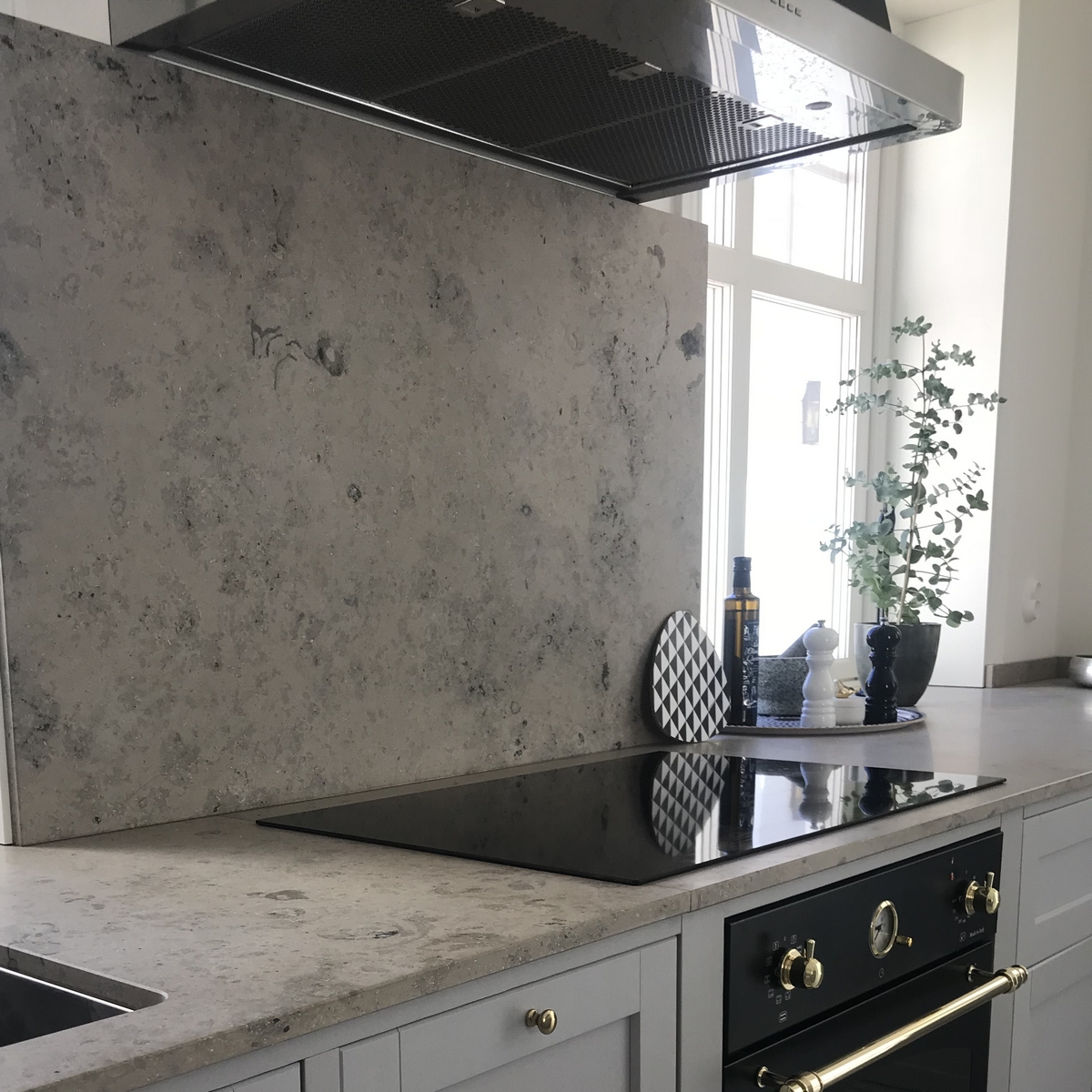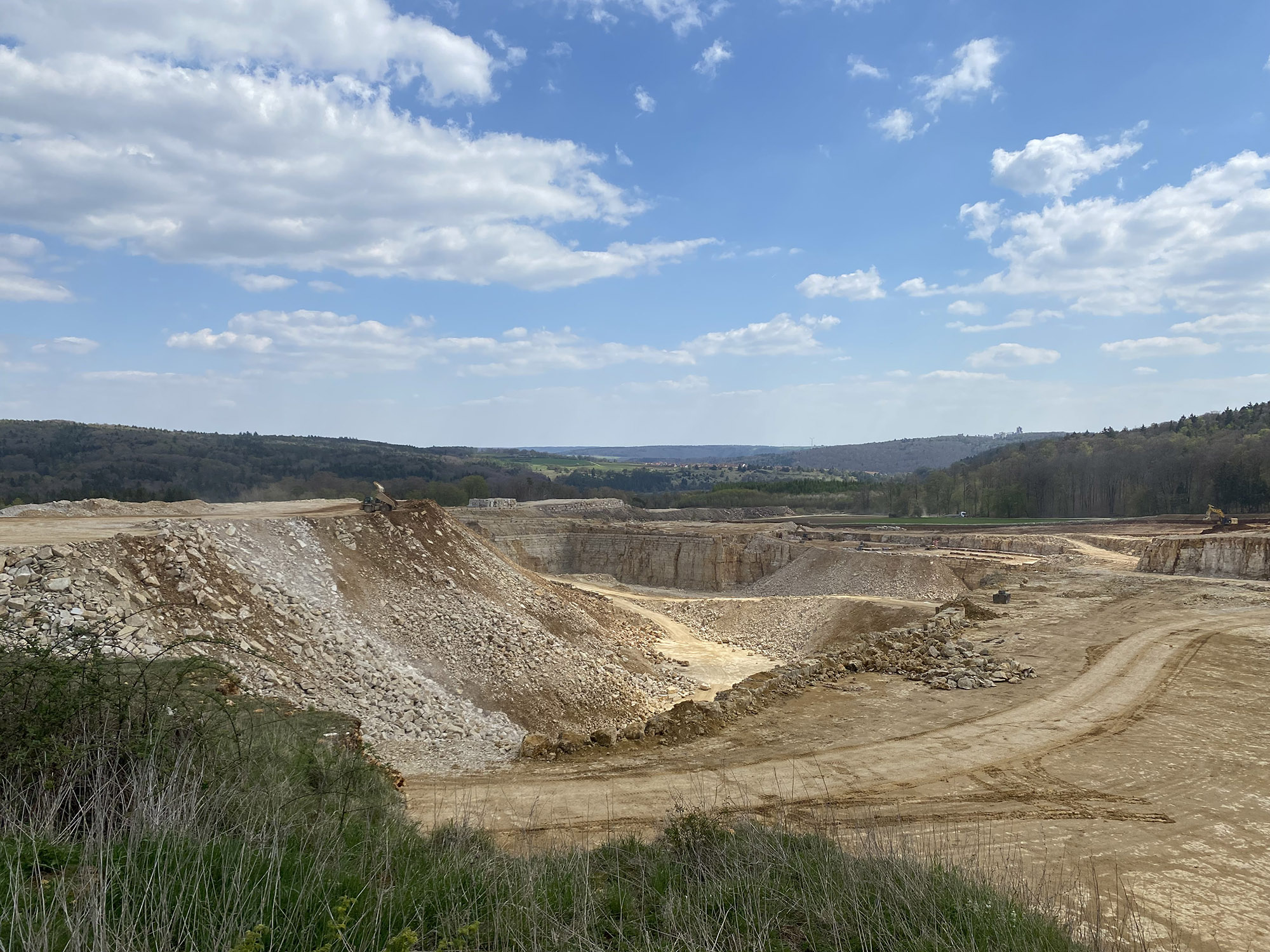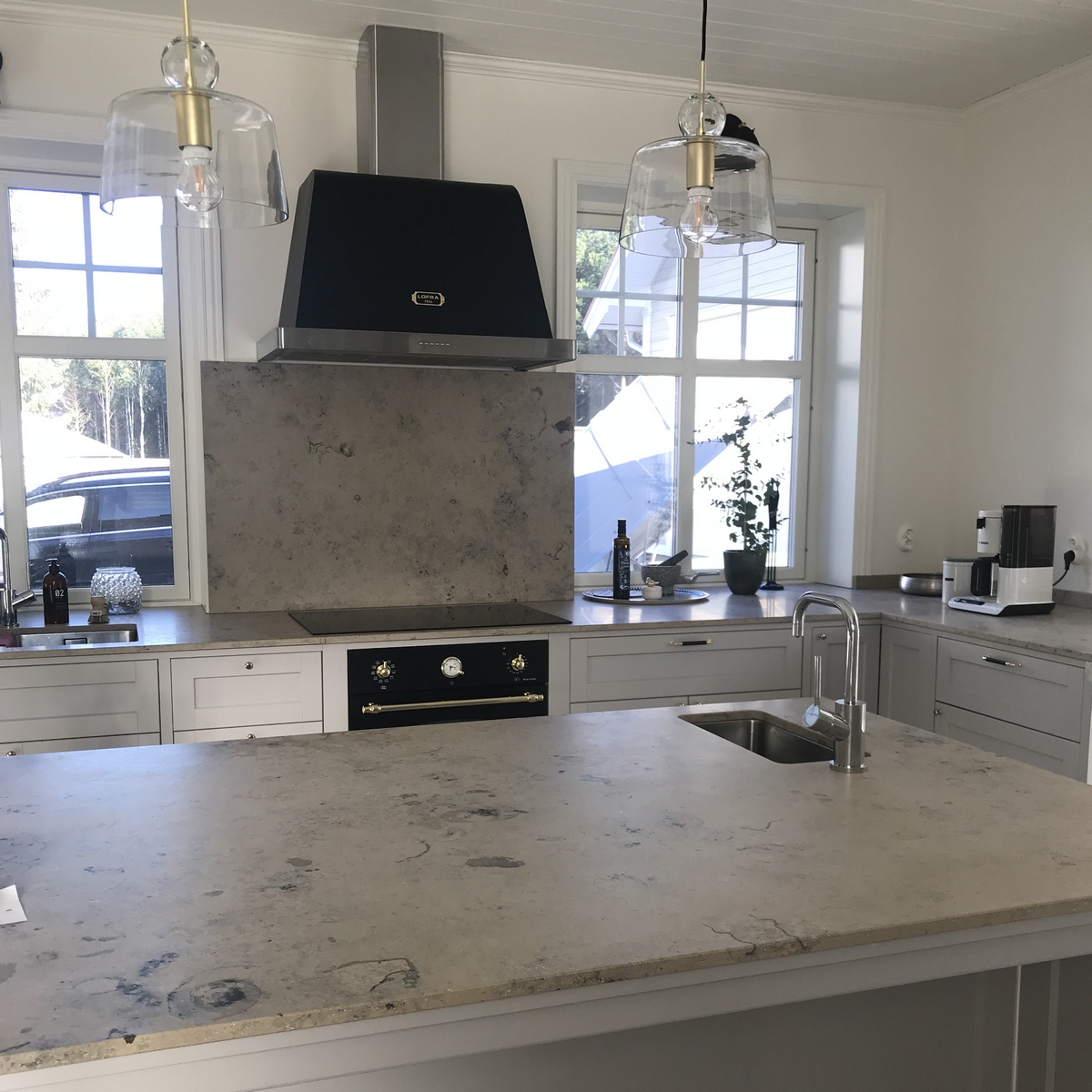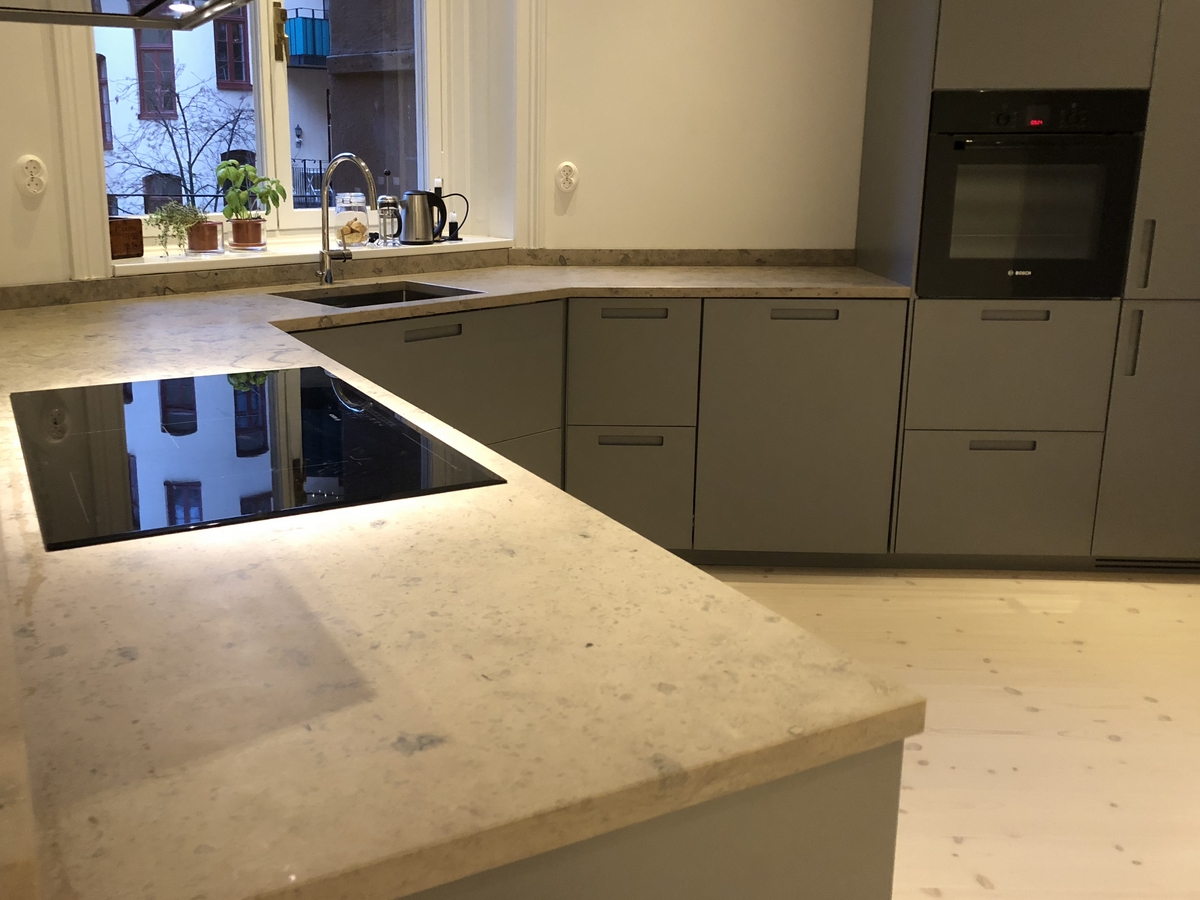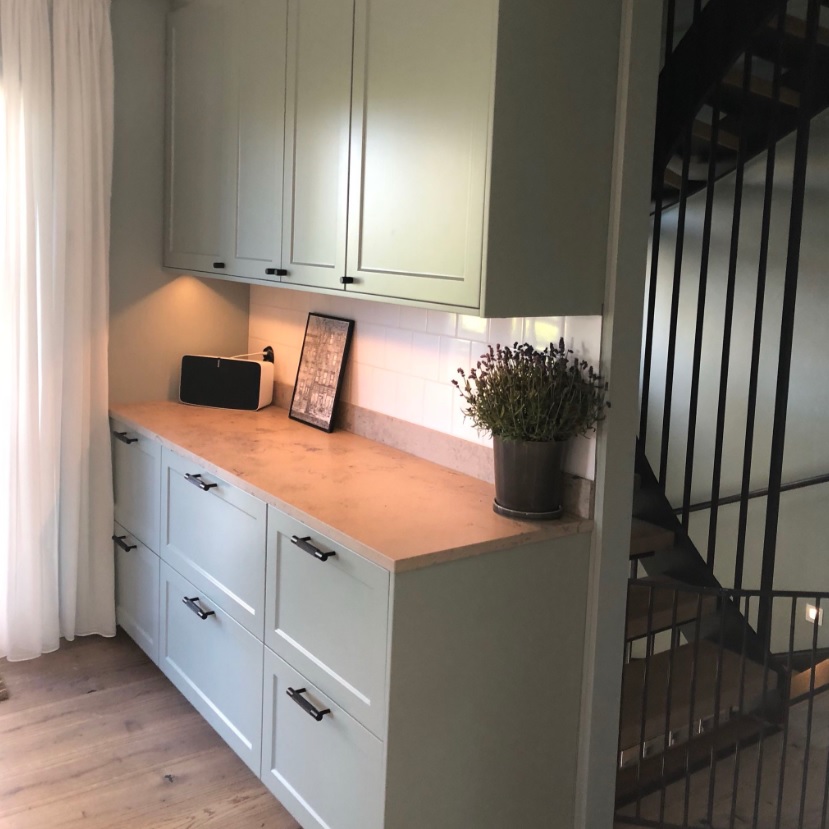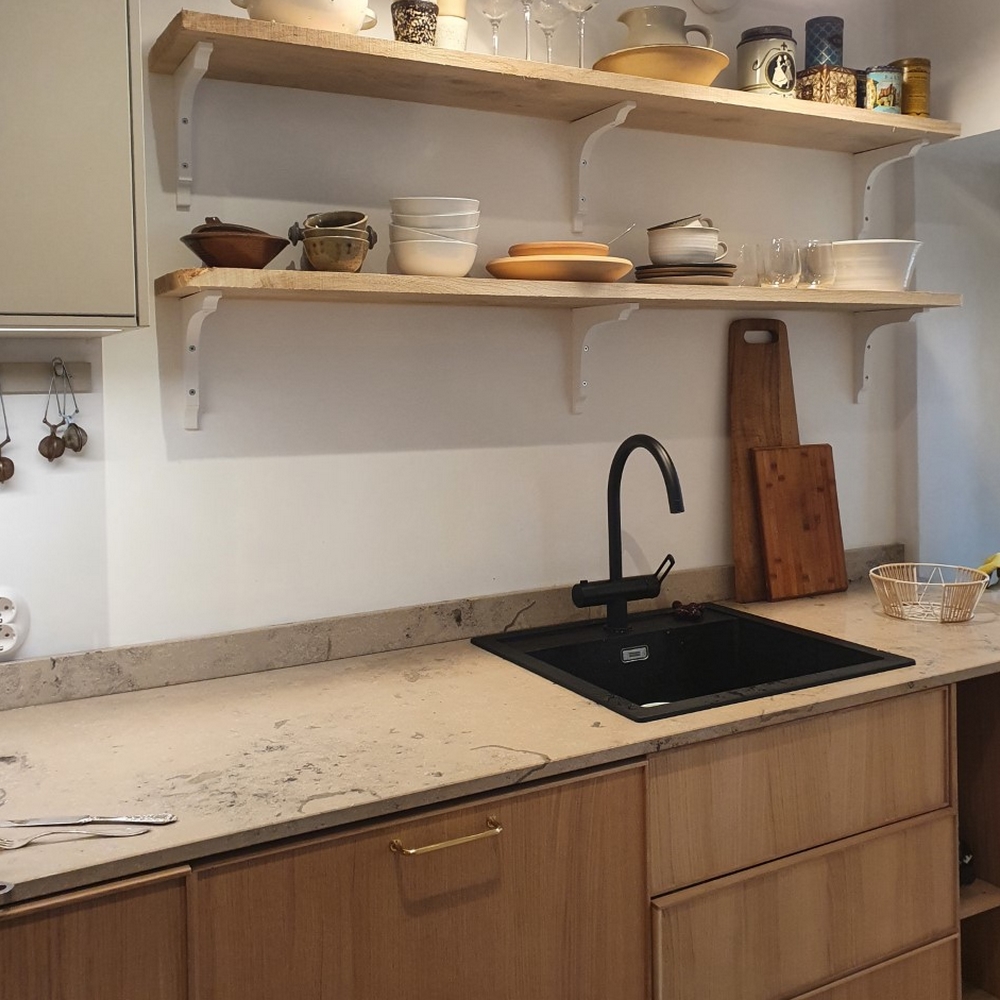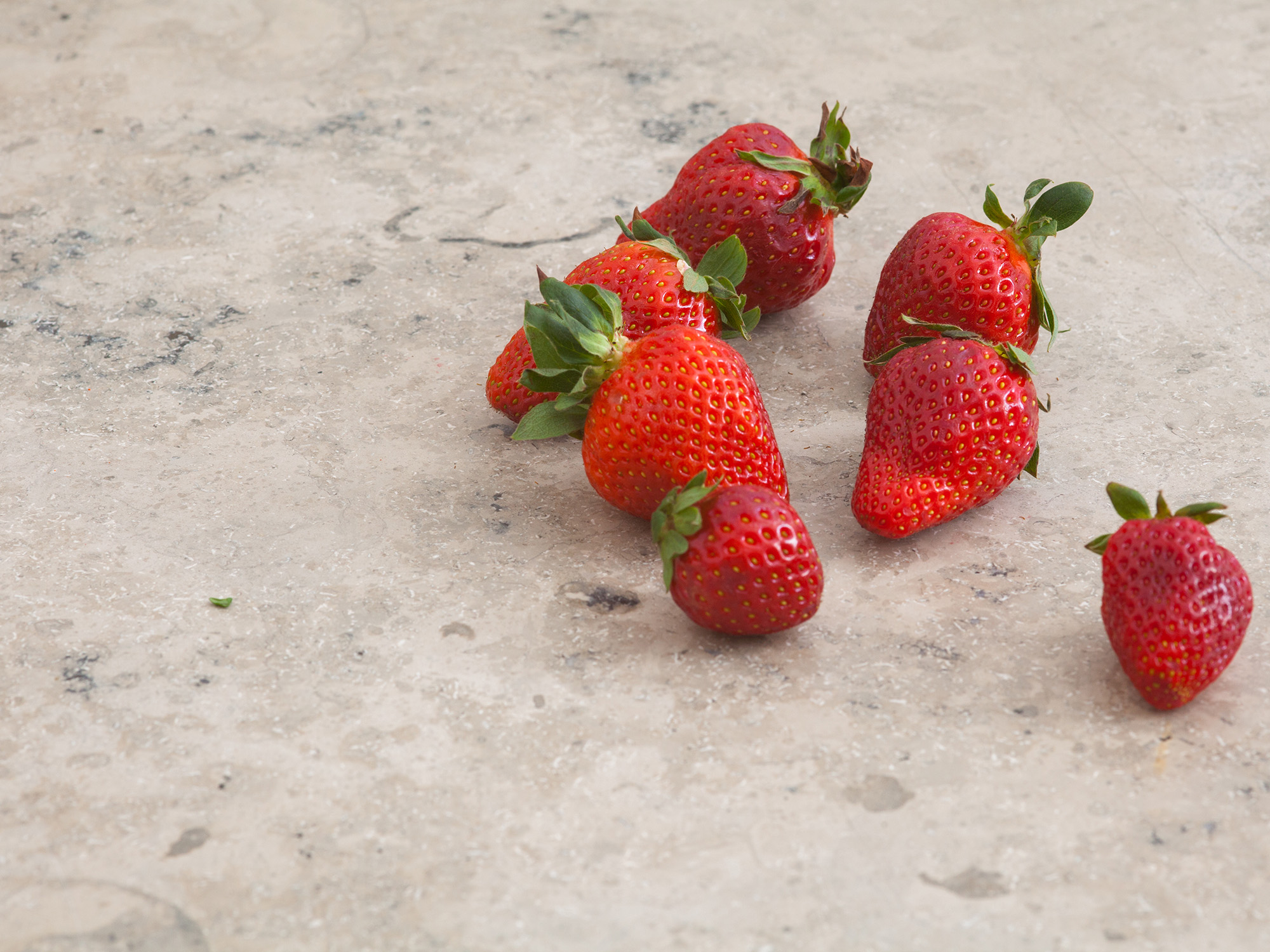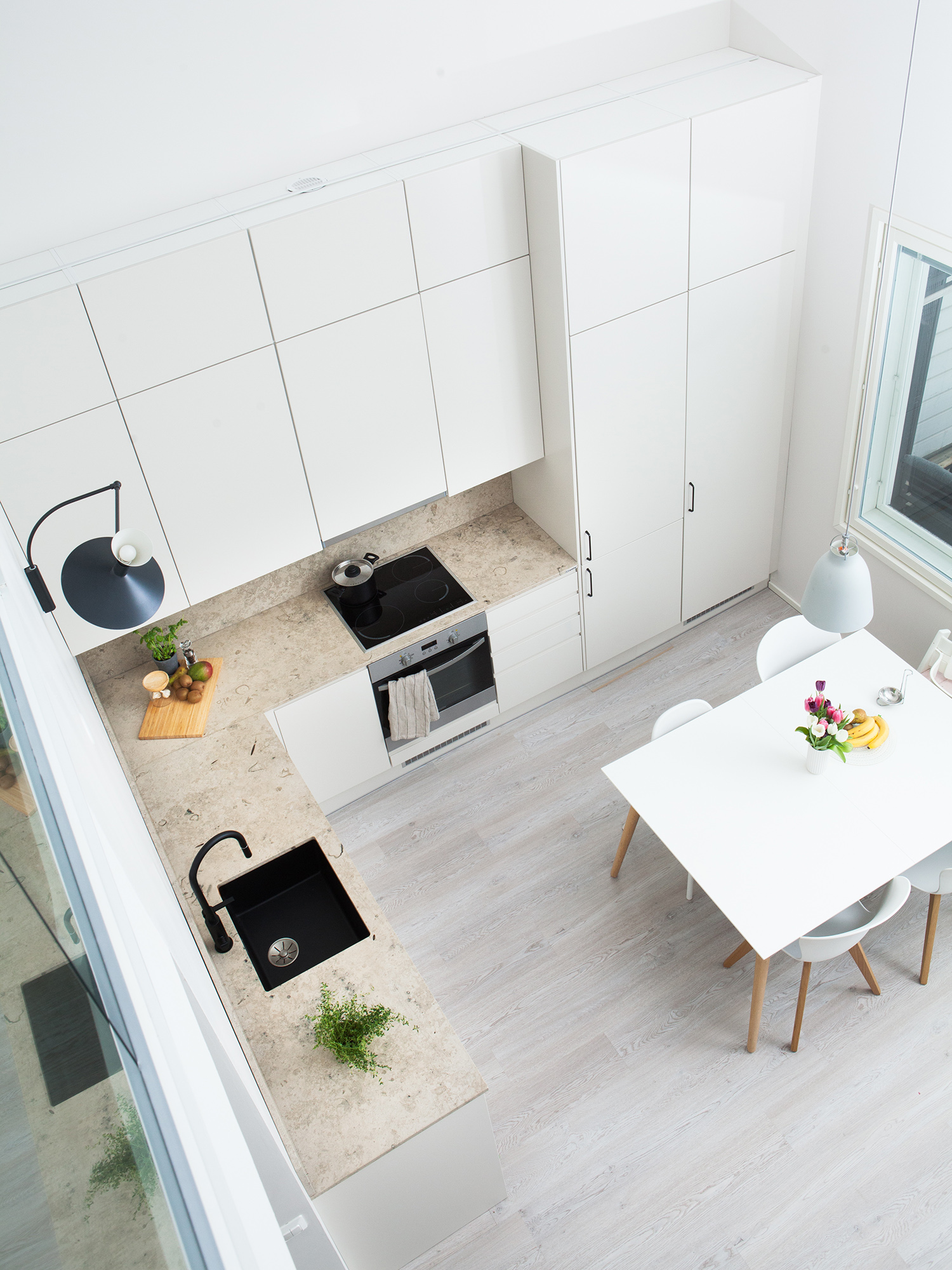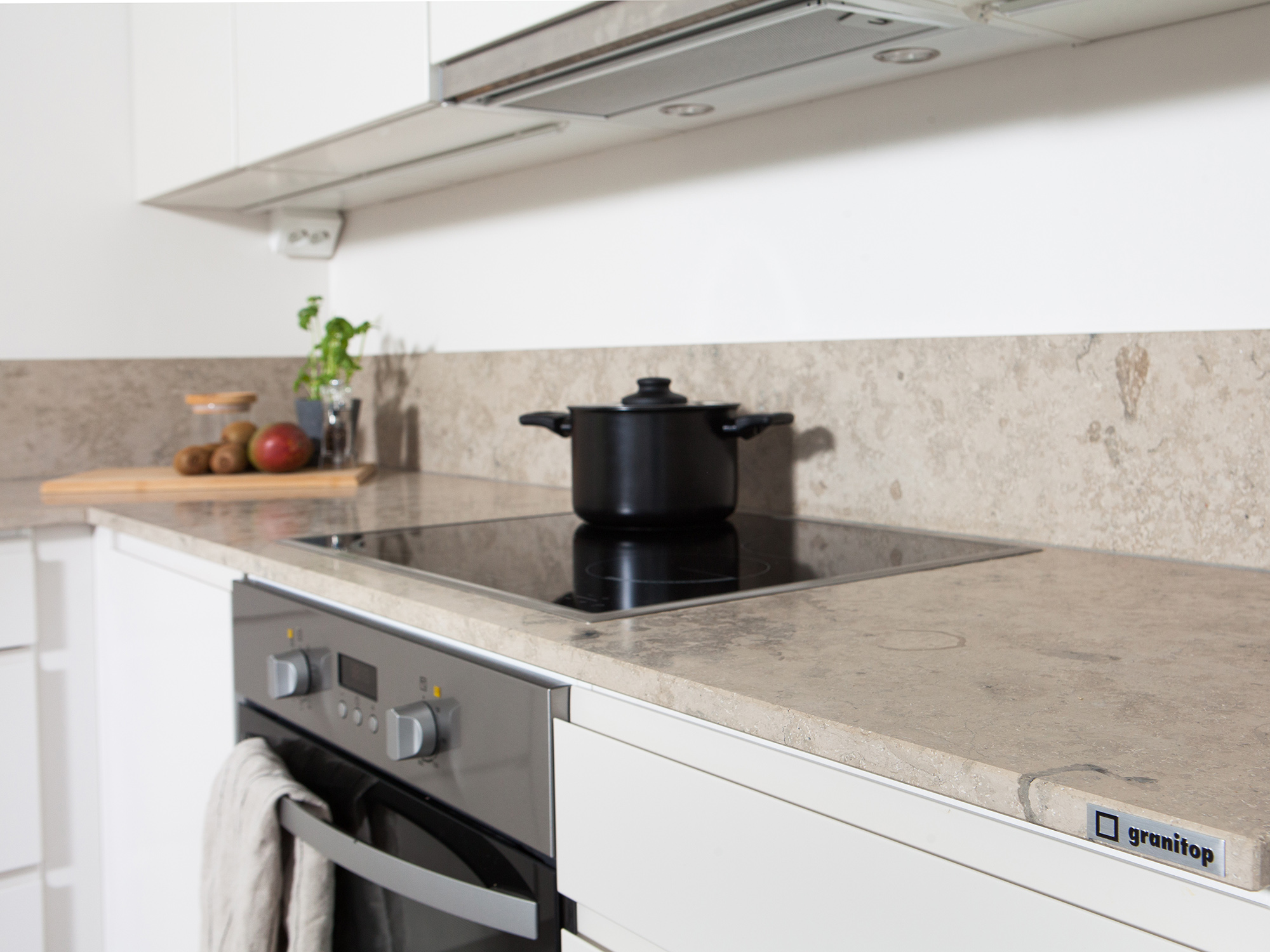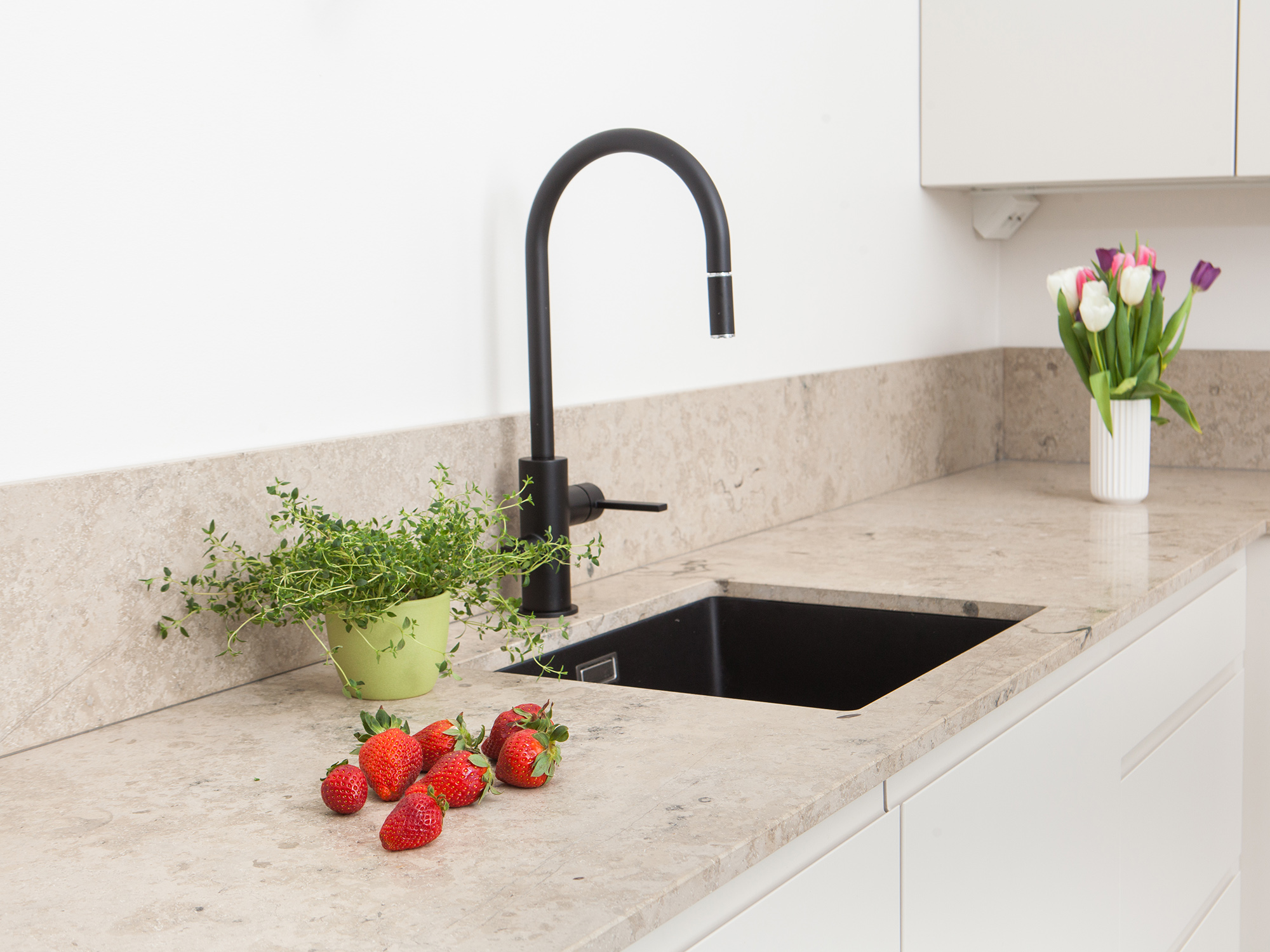
Jura Grey limestone continues to be trendy!
Limestone, alike to other natural materials such as granite and marble has formed millions of years ago by a long geological process. Nature has really taken its time to design the pattern of limestone and you can often clearly see the remnants of life and sediments of the sea of the Jurassic era in these stones today.
One of the most illustrious (and harder than average) limestones often characterized by actual fossils is Jura Grey from Germany. This best-known stone material of German origin comes from the quarries of Bavaria (Bayern), situated in Southern Germany near Munich and bordered by Austria and Czech Republic.
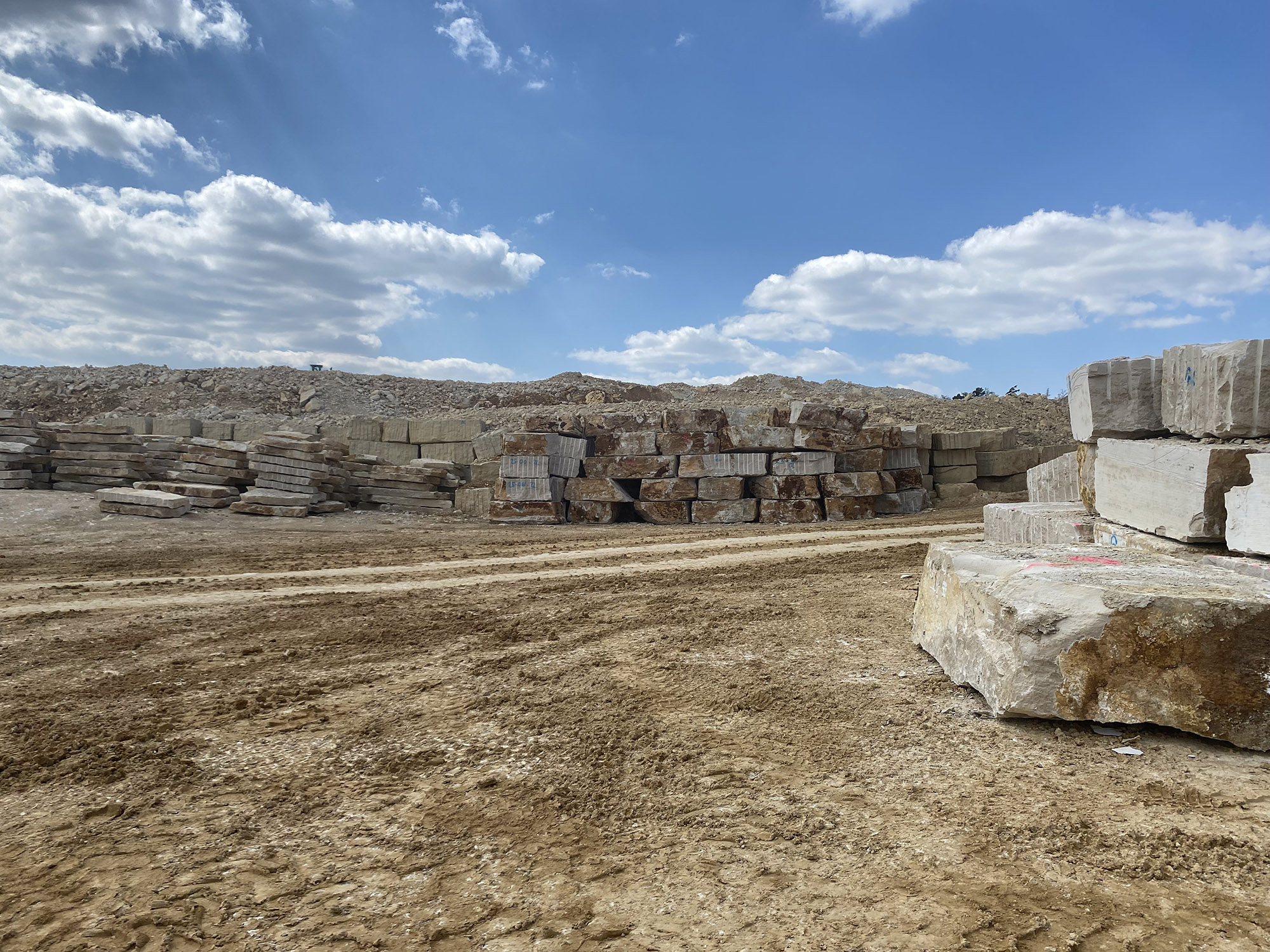
Jura’s greyish or beige background is brought to life by darker spots and veins that often resemble seashells or some ancient plant. There’s usually a lot of flowing and mottled pattern which makes – even if you have them – stains quite inconspicuous. Other limestones, for example, Azul Valverde from Portgual or Thala Grey from Tunisia are more uniform in their looks and thus not so forgiving as Jura Grey when it comes to stains.
However, the appearance of Jura Grey, despite its characteristic pattern, matches almost any shades of colour you may use in in your kitchen design because of its neutral colors.
Compared to your average grey, this limestone is softer and shinier, in English design language it is called greige (grey+beige). There are a lot of possibilities for combinations, in particular, the colour of the furniture and walls could be white, beige or gray and preferably in classic style. On the other hand a Jura Grey worktop can also be very impressive with dark-grey furniture in a modern interior featuring black or stainless steel kitchen appliances.
Using limestone for producing work surfaces is a growing trend. White marble (Bianco Carrara C) may look very attractive but as Jura Grey is more neutral it is also suitable for homes where rural beauty is the main objective. For example, in a log house marble or modern quartz stone countertop may seem out of place, but limestone harmonizes perfectly with wood. Therefore more and more people use limestone for fireplaces, window sills and in bathroom design.
For some time already industrial concrete grey has been one of the fashion colors in the kitchen. At the moment, however, interior designers are advised to add more colors and vivid accents (accessories) to enliven the modern kitchen-interior. If it’s an open kitchen where a colorful solution and striking/showy tapestries may be used and you must find a true harmony – the limestone is almost irreplaceable.
As quartz materials tend to fade in direct sunlight over the years, it is worth paying attention to limestones. In addition to Jura Grey some of them, for example Azul Valverde from Portugal and Thala Gray from Tunisia are modest and with the pattern which is not overly dominant in design. By choosing a worktop or window sills made from limestone, you can be sure that you´ll get something that will last for a lifetime!

Find all the materials you need and contact us if you have any questions!
Kitchen trends to look out for in 2022
Limestone worktops – dinosaurs in your living room
The traces of the creation of the Earth on Your kitchen worktop
Ceramic worktops – beautiful, trendy and extremely durable
Why should I choose a stone worktop?
A stone worktop is a good choice for anyone who values natural materials and a closeness to nature in their home. The practicality of the material as well as the beautiful appearance and unique patterns shaped by the forces of nature speak in favour of the stone. The pattern in artificial stones is man-made, but in this case, too, inspiration is mostly obtained from natural stones.
In what materials does Granitop offer worktops?
Granitop’s product range includes granite, marble, quartz stone, quartzite, porcelain, limestone and terrazzo, which is an artificial stone something like quartz, but differs somewhat in terms of the method used in its production. While a mixture of natural materials is pressed into slabs under a pressure of about 100 tonnes during the production of quartz stone, terrazzo contains larger pieces of natural stone, which together with cement or a resin is allowed to mature in a square container, where natural processes are simulated.

